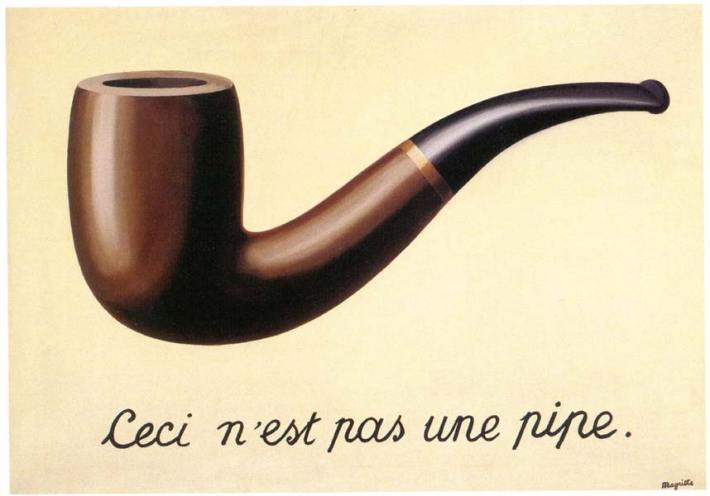Tidyverse Tutorial
- The Tidyverse is a collection of R packages for manipulating tidy data
- They do not necessarily extend functionality beyond base R but they do make things easier and faster:
- consistent syntax (always snake_case, always take the data as the first argument)
- consistent output (type-stable, never makes assumptions about how you want to treat your data)
- amenable to piping
-
Compact data (AKA wide) vs tidy data (AKA long data):
- compact:
| GeneID | Sample1 | Sample2 |
|---|---|---|
| Gene1 | 473 | 526 |
| Gene2 | 7203 | 6405 |
| Gene3 | 59487 | 51467 |
- wide:
| GeneID | Sample | Count |
|---|---|---|
| Gene1 | Sample1 | 473 |
| Gene2 | Sample1 | 7203 |
| Gene3 | Sample1 | 59487 |
| Gene1 | Sample2 | 526 |
| Gene2 | Sample2 | 6405 |
| Gene3 | Sample2 | 51467 |
- Each variable you measure should be in one column.
- Each different observation of that variable should be in a different row.
- There should be one table for each “kind” of variable.
- If you have multiple tables, they should include a column in the table that allows them to be linked.
The pipe function:
library(magrittr) #Ceci ne pas une pipe
set.seed(69)
rnorm(10) %>% mean

tibble/readr
- tibble is the tidyverse version of a dataframe
-
readr is the tidyverse version of read.delim
- tibbles look nicer than dataframes when printed and are more consistent/predictable:
- “tibble() does much less than data.frame(): it never changes the type of the inputs (e.g. it never converts strings to factors!), it never changes the names of variables, it only recycles inputs of length 1, and it never creates row.names()”
- when printed to the screen, tibbles only display 10 rows and as many columns as can fit on
- they also display the data type of each column and the dimensions of the dataframe
-
readr creates tibbles. It’s also fast and flexible
- if a column of mixed numbers and strings is coearsed using as.numeric(), traditional dataframes will return the rank of the factor levels, rather than the numbers:
df <- read.delim("examples/SampleInfo.txt")
2 * as.numeric(df$ReadLength)
# [1] 6 6 6 6 6 6 6 8 4 6 6 4 2 4 4 2 2 6 4 2 2 4 4 2 4 4 2...
2 * as.numeric(as.character(df$ReadLength))
# [1] 152 152 152 152 152 152 152 NA 250 152 152 250 200
tibble <- read_tsv("examples/SampleInfo.txt")
2 * as.numeric(tibble$ReadLength)
# [1] 152 152 152 152 152 152 152 NA 250 152 152 250 200
tidyr
- tidyr converts between wide and long formats
- it can also split a column into multiple columns
wide <-tribble(
~Gene, ~Sample1, ~Sample2,
"Gene1_APOE1", 473, 526,
"Gene2_SETD1A", 7203, 6405,
"Gene3_TCF4", 59487, 51467
)
long <- gather(tibble, Sample, Value, -Gene)
wide <- spread(long, Sample, Value)
separate(wide, Gene, c("GeneID", "Gene_name"))
dplyr
- dplyr is for dataframe/tibble manipulation
- filtering rows (filter)
- selecting columns (select)
- modifying columns (mutate)
- joining tables (left_join, right_join, full_join, inner_join)
- summarise columns (summarise)
- group-wise summaries (group_by)
- Select columns
head(tibble[,c('Sample', 'Sex')])
select(SchoolData, Sample, Sex) %>% head
- Select rows
head(subset(tibble, PCW< 14))
filter(tibble, PCW<14) %>% head
- Sort
head(tibble[order(tibble$RIN),])
arrange(tibble, RIN) %>% head
- Calculate group means
head(aggregate(PCW ~ Sex, data=tibble, FUN=function(x) av_score=mean(x)))
#I can't figure out how to rename the output
tibble %>% group_by(Sex) %>% summarise(av_age=mean(PCW)) %>% head
- Calculate multiple stats
head(aggregate(RIN ~ Sex+PCW, data=tibble, FUN=function(x) c(mean=mean(x), var=var(x))))
tibble %>% group_by(Sex, PCW) %>% summarise(mean=mean(RIN), var=var(RIN)) %>% head
- Count occurences per group
head(aggregate(RIN ~ Sex, data=tibble, FUN=function(x) num_students=length(x)))
tibble %>% group_by(Sex) %>% summarise(num_samples=n()) %>% head
- Compute new values
tibble$total_length <- 2 * as.numeric(tibble$ReadLength)
head(SchoolData)
tibble %>% mutate(total_length=2 * as.numeric(ReadLength)) %>% head
- Pipe results to ggplot
library(ggplot2)
tibble %>%
group_by(Sex) %>%
summarise(mean=mean(PCW), se=sd(PCW)/sqrt(n())) %>%
ggplot(aes(x=Sex, y=mean)) +
geom_bar(stat="identity", fill="royalblue4", alpha=1/2) +
geom_errorbar(aes(ymin=mean-se, ymax=mean+se), colour="royalblue4", alpha=1/2)
- Incorporate other datasets
tibble %>%
group_by(Sex) %>%
summarise(mean=mean(PCW), se=sd(PCW)/sqrt(n())) %>%
ggplot(aes(x=Sex, y=mean)) +
geom_jitter(aes(x=Sex, y=PCW), alpha=1/10,
position = position_jitter(width = 0.2),
colour="royalblue4", data=tibble) +
geom_point(stat="identity", alpha=2/3, shape=5, size=2, colour="royalblue4") +
geom_errorbar(aes(ymin=mean-se, ymax=mean+se), colour="royalblue4", alpha=2/3)
- Select the highest RIN sample for each age
- multiple results if tied; use row_number() if you want a single sample per age
tibble %>% group_by(PCW) %>% filter(min_rank(desc(RIN)) == 1)
- Calculate deviation from sex-specific mean age for each sample
tibble %>%
group_by(Sex) %>%
mutate(mean = mean(PCW)) %>%
ungroup() %>%
mutate(deviation=PCW-mean)
- Combine dataframes
- works the same as merge, but a lot faster
counts<-read_tsv("Counts.txt")
inner_join(tibble, counts, by=c("Sample" = "SampleID")) # keeps only rows common to both datasets
left_join(tibble, counts, by=c("Sample" = "SampleID")) #keeps all rows in left dataframe, adding NA when row is missing from right dataset
right_join(tibble, counts, by=c("Sample" = "SampleID")) #keeps all rows in right, adding NA when row is missing from left dataset
full_join(tibble, counts, by=c("Sample" = "SampleID")) #keeps all rows in both, adding NA when row is missing from either dataset
stringr
-
package for string manipulation
-
extract fragment size estimate from homer peak calling
frag_size <- read_file("examples/peak_calling.txt") %>%
str_extract("(?<=fragment size = )\\d+") %>%
as.numeric()
purrr
- tidy version of the apply family
-
apply a function across subsets of a data frame (among other things)
- correlate RIN vs mapping stats
inner_join(tibble, counts, by=c("Sample" = "SampleID")) %>%
gather(stat, value, 7:13) %>%
group_by(stat) %>%
nest() %>%
mutate(cor=map(data, ~cor.test(RIN, .$value)), r=map_dbl(cor, 4), p=map_dbl(cor, 3)) %>%
select(-data, -cor)
Useful resources
Alternatives to dplyr
- ddply{plyr} (slow)
- data.table (confusing)